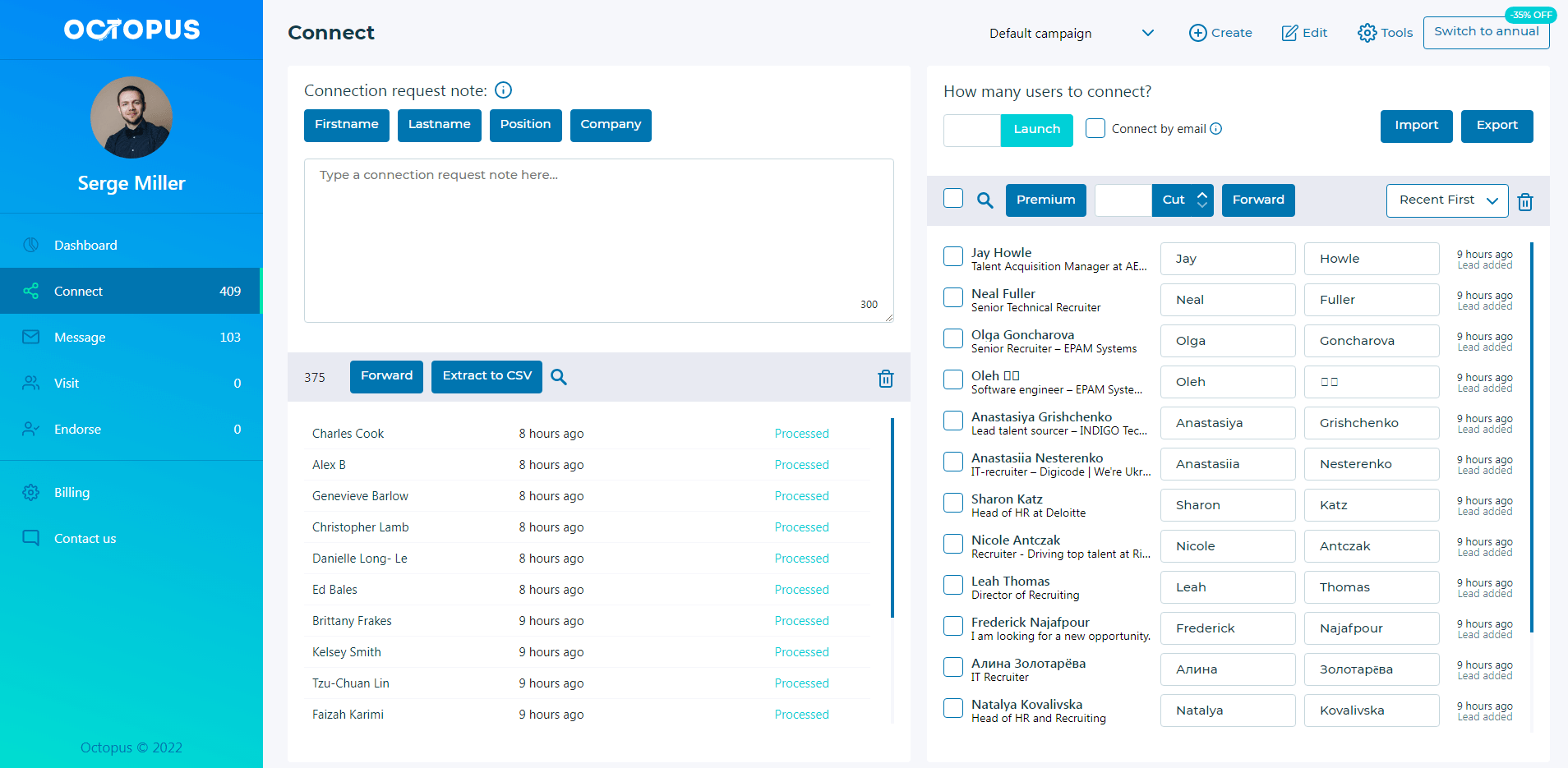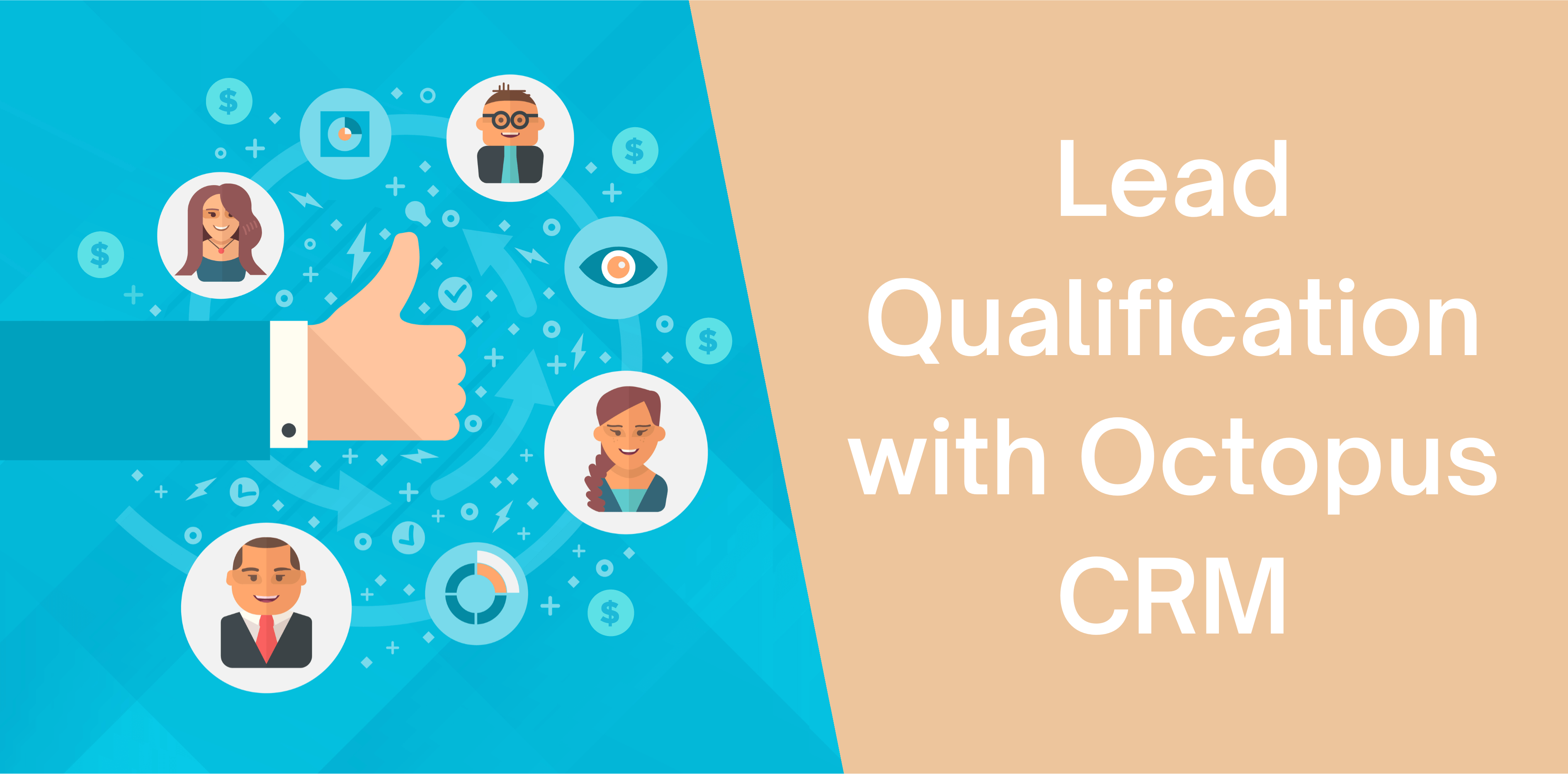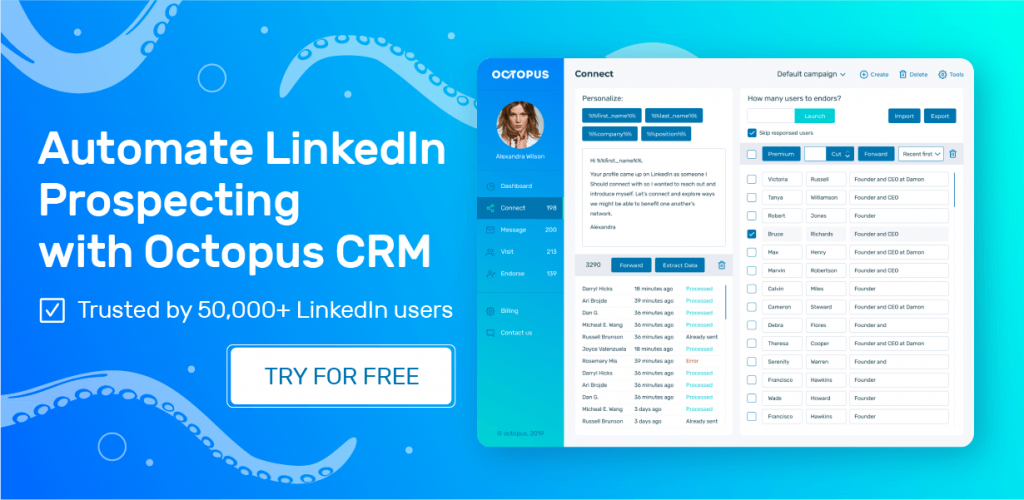While you may focus on the number of leads, it is also essential to ensure that the leads you generate are of high quality and will produce results. The lead needs to fit your customer profile, converting the lead into a paying customer.
What is Lead Qualification?
Lead Qualification is the determination of whether a lead will turn into a paying customer or not. This is a part of the sales funnels that help businesses sift and sort through all the leads and separate the ones who have higher chances of becoming customers.
When you practice your marketing strategy and sales strategy, you will likely attract lots and lots of leads, but not all of these will turn into customers. Therefore, it is not a good idea to waste resources and efforts in chasing leads that are not very likely to turn into customers. Instead, a targeted approach where you invest all your energy and resources into qualified leads will help you gain more customers and fasten the process.
The process of lead qualification helps you decide whether the lead you receive fits the persona of your target customer base or not. It is an important part of the sales cycle, where the marketing and sales departments work together to determine what leads qualify. All the leads pass the lead funnel, and only a few will turn into customers towards the end of the sales funnel. Since it is a part of the sales cycle, the marketing team first gathers all possible leads, including all the information about them. This may include site visits, email subscriptions, and social media contacts.
Lead Qualification is very important to ensure efficiency. As a business, you may have limited marketing and sales resources, so you cannot make rash decisions and be very particular about where you spend your money and other resources. If you do not go through the lead qualification process, you will spend much more money than you intend. This way, not only will you waste money, but you will also end up wasting a lot of time. You must practice lead qualification to increase your business and convert leads into customers.
How Does Lead Qualification work?
The lead qualification has multiple steps in the process that help you rectify whether your leads are qualified or not. Here is how lead qualification works:
Step 1: Customer Profiling

The first step to lead qualification is when your marketing team collects prospective leads’ contact information. In this step, the marketing team can divide the leads into different categories such as unqualified leads, marketing qualified leads, sales qualified leads, product qualified leads, and finally, conversion qualified leads.
In this step, the team can remove all the unqualified leads. These leads are people who are not suitable buyers for your products. The marketing qualified leads are people you can reach out to and market your services and products, as they may be interested. You can do this through different methods, such as emails or other on-site offers.
Moreover, some leads may engage with your product and have already taken action, such as signing up for a free trial. Lastly, we have the conversion qualified leads. These leads may contact you independently and ask for further connections, such as asking for an on-call appointment or submitting your on-site form. To profile your customers, you need as much information on them as possible. The Octopus CRM LinkedIn automation tool can help you gather information. You can use its features to connect with many profiles and learn more about them, including their social presence. With the tool, you can also filter through all the contacts associated with the company.
Once you find a company that qualifies as a lead, you can mark it as a qualified lead and use that lead to find more companies that fall in the same demographic. Moreover, it is also important to learn the current financial situation of a company before you carry on tailing the lead. If they are financially sound, it will mean that they are more likely to buy the solutions you offer.
Lastly, you need to keep an eye on all the growth factors of the lead in question. If the positive growth indicators are higher than the negative ones, then there is no reason why you should hold back on pursuing your leads.
Step 2: Engaging with Leads
Once you determine where each lead falls, you can engage with the leads. In most cases, this means a sales call where the representative will schedule the call and then connect with them. During this conversation, the sales representative can ask the lead several questions to ensure they are prospective customers. This will help them decide whether they need to pursue the lead further and if the result will be possible.
You will not be able to get all the information you need unless and until you do not communicate with the lead directly. You initiate communication with the help of a cold email. Using a cold email, you will be able to establish a connection. However, you need to personalize your cold email so that the company sees your effort in reaching out and using personalized emails. With a personalized email, you are more likely to elicit a response. It is best to send out multiple cold emails as most prospects do not respond immediately or on the first or second email. Once the prospect responds, you can move towards a discovery call.
Step 3: Gathering Information

To pursue the lead further, you will need to ask them relevant questions such as whether or not they are interested in buying the product or services you offer. Moreover, you can also ask them whether they are already using a similar product and if they are satisfied with it.
On the other hand, rather than just questioning their interest in the product or services, you also need to ensure whether they can buy the services or not. For instance, you need to gather information on whether they have the finances to purchase, if they are in the right geographical location, or if authorization is needed to make the purchase.
When your prospective customer answers all these questions, you can easily tell whether they qualify for further perusal.
Using a discovery call, you can gather all the necessary information by asking various questions following the MINDA framework.
Money – Here, you can ask whether the company has a big enough budget to purchase from you. You can even ask what their budget is, and decide whether or not they will be able to avail your services. Moreover, you can ask them if they have purchased similar solutions before and learn what they paid for those.
Interest – To gauge the interest of your prospective customer, you can ask them whether they have ever considered such a solution and if they already have one. Furthermore, you can also ask what success they think the solution can bring them.
Need – To purchase the services and products, your customers need to have a ‘need’ for them. You can ask your customers what challenges they face and then decide if your solution can help fulfill these needs. If you do some industry research, you can prose questions accordingly and ask about similar companies’ problems.
Decision Time – As a sales representative, you need to determine a time frame the prospective client will take to decide. For that, you can ask them multiple questions, such as how long they have been facing the problem and when they expect to do something about it.
Authority– When making the discovery call, you need to ensure that you are talking to someone with authority to make the required decision. If they do not have the authority, you can ask them to connect you with the ones who do.
After the complete process, you will be able to decide what leads are qualified and which ones are unqualified. We’ll discuss further differences between the two later in the article.
Why Do You Need a Lead Qualification?
If you want to improve your sales, you need a complete lead qualification process. There are many reasons you need lead qualification; let’s explore all the reasons:
Time-Saving

Many businesses waste a lot of their time chasing after leads that will not result in the required outcomes. These businesses approach all leads that come their way, which can take up a lot of time with little to no returns. Instead of wasting time chasing dead ends, you can target your energy towards leads you know are more likely to turn into customers. Save time with lead qualifications and have a hyper-focused approach.
Increases Revenue
Lead qualifications are a sure way to increase your revenues. Your sales and marketing teams need to have a singular goal and should be in sync to improve your revenues. You are less likely to miss out on opportunities by channeling your focus on leads with better outcomes. This way, you will also have better close rates and, therefore, higher revenues. Since this is the main goal of business, you need to ensure that lead qualifications result in higher revenues.
Personalized Sales
Marketing and sales are no longer generalized concepts. Marketing and sales campaigns are more likely to succeed if they are personalized. The complete process of lead qualification allows you to learn a lot about the companies you want to pursue. With this information, you can improve your marketing to target all the customers and what they need exactly. Personalized sales will help improve your brand image, and that will further help improve your revenue.
Efficiency
The lead qualification is very efficient and can help you cover more qualified leads in less time. If you do not use lead qualifications, you will pursue leads that do not bear any fruit. You may put in a lot of effort, but all these efforts will end in vain if you are not efficient enough. Moreover, the entire process is highly efficient, and with a few simple steps, you can improve your sales approach.
Why is Lead Qualification Important?
Every business has sales goals that it must meet to keep the business afloat and progressing. While there are many things you can do marketing-wise, you can also implement lead qualification as a part of your sales funnel.
There is a lot for your sales team to do; they cannot go after every lead. It is very impractical and inefficient. This is why it is better for your sales team to only focus on the leads that have the probability of turning into customers. You must use lead qualifications to save your sales team’s efforts and ensure that you have a productive approach to pursuing new leads.
If you have a proper lead qualification system, your sales team will simply filter through the leads that come in and push for better results. This will help boost your marketing team’s performance and increase your revenues greatly. Conserve revenues this way and save up on money and energy that can be used elsewhere. Qualifying leads at that step can be very hard as they are generated using automated tools. Once the lead only comes to you, you can decide whether it qualifies to be taken after or not.
Qualified Leads vs. Unqualified Leads
Lead Qualification is a method that helps sales teams to differentiate between qualified and unqualified leads. When differentiating between the two, you need to understand their differences. Let’s discuss some of the most prominent differences:
Qualified Leads
There are many characteristics of a qualified lead that helps it stand out from all the unqualified leads. For instance, all the qualified leads are from companies who know what kind of services you offer. Not just that, but these companies will also tick all your boxes.
A qualified lead will not have to worry about budget when ordering your help. They will be financially sound to purchase your product and have better financial charts. Moreover, they must be able to make buying decisions based on the products and services you offer. These companies must also be within the vicinity of your operation so they can easily get your services and products.
Leads are only qualified if they pass the initial stage and are in the process of initiating or closing the sales deal. Qualified leads fit the customer profile and are the only leads the sales teams need to go after.
Unqualified Leads
Unqualified leads are filtered out at several intervals during the lead qualification process. These leads are usually unaware of the services and products you offer. Moreover, they also fail to understand how your solutions can benefit their business.
Unqualified leads usually do not have the monetary reserves to order your products or services. They may have the need but not the means to pay for the solutions you offer. On the other hand, it is possible for them to not know about the fact that they need a solution to begin with. They may see the problems they face but might not know how to solve them. These leads are also ones that may not fit the customer profile you have.
For all the sales teams who want to take their business to the top, you need to ensure that you only pursue qualified leads and avoid going after unqualified leads.
Lead Qualification Frameworks
Going through the sales funnel, you will reach the lead qualification stage; in this stage, you will need to determine the qualification of your leads using some sort of framework. To help you with the determination, there are several lead qualification frameworks you can use. Here are some of the best ones that will help you sift through all the unqualified leads:
BANT
BANT is one of the most popular lead qualification frameworks and is perfect for those who want to begin with. Four important factors are involved in this framework:
Budget
When running your lead through this framework, you will have to learn whether the prospect has enough finances to purchase your products or services.
Authority
When talking to the company on call, as a sales representative, you need to get through to the person you know will be involved in the decision-making. If you are talking to someone with no authority, then the lead is not qualified. You need to talk to someone who will be able to make the decision that is needed.
Need
To buy your product, the company should initially require it. It is a very important factor that helps companies decide whether or not they should buy what you have to offer. A qualified lead will have an evident need for your product and does not already have a solution for it. They may work with one of your competitors if they already have a solution.
Timeline
A sales cycle typically lasts 3-9 months, considering your deal. You need to learn the timeline of the prospects so you can contact the right leads according to priority. You must first consider all the prospects that will buy your products within 3 months rather than those who may take longer to buy your products.
ChAMP
The ChAmp is considered an alternative framework to BANT. Its framework segments are as follows:
Challenges
A quality lead should focus on all the challenges they face in their day-to-day operations. Not just that. But they should also recognize that you have the solutions to their challenges.
Authority
When talking to the representative from the company, you need to ensure that you are talking to the right one. Only those higher up on the hierarchy have the authority to make purchasing decisions. Ensure that you talk to the right person to make a decision as soon as possible.
Money
The quality lead should have the purchasing power and the finances needed to order the services and products you provide. They will not qualify as a good lead to pursue if they do not have the budget to order your services.
Prioritization
Companies only solve problems that are high on their priority list. So you need to consider whether the problem you solve is big on their priority list or not. Unlike the previous framework, it does not rely on a timeline but on prioritizing the challenges they face.
ANUM
The framework is very similar to the BANT model, but there is a significant difference in the chronology of both frameworks.
Authority
You need to determine whether the person you’re talking to is in the position to make the decision. They need to have the authority to make purchasing decisions.
Need
Here, you can determine whether or not the lead requires the solutions you offer. Unless and until they do not need the product you offer, they will not buy from you.
Urgency
The lead quality will also depend on whether or not the company is ready to buy the product or services right away or whether it will take time for them to conclude.
Money

Again, you need to consider if the company is financially sound enough to buy from you.
MEDDPICC
The MEDDPICC is considered a detailed framework that consists of factors that help you determine whether a lead is qualified or not.
Metrics
The solutions you provide must be economically beneficial for the prospective customer. Moreover, it should be measurable in metrics.
Economic Buyer
The individual from the company should have the authority to make purchasing decisions on behalf of the company.
Decision Criteria
This factor asks you to consider all the strong points that help you stand out from the crowd. You need to highlight all the reasons why customers should choose you.
Decision Process
This is where the prospect will make the needed decision, and depending on their decision, you will be able to judge when and whether or not you will be able to finalize the deal.
Paper Process
The paper process is a step where you complete all the legal documentation about the purchase.
Identify Pain Points
All lead to some or the other pain points. If you want to excel in your sales, you need to learn all the pain points of your prospective customers and target these pain points. You need to have relevant research to find the pain points to be accurate.
Champions
All sales teams have a champion, someone who excels at sales and have ensured that the company decides in your favor.
Competition
If your lead has any information on your client, it is best to extract that information from them. And with the information you gather, you can make relevant changes to help you get an edge over your competitors.
GPCTBA/C&I
This framework has been developed by Hubspot and is also considered to be one of the most complex frameworks:
Goals
You must have complete knowledge of all business goals of your prospective lead.
Plans
Keep an eye on all the plans they formulate to achieve their goals so you can mold your sales tactics accordingly.
Challenges
Identify your prospective customers’ challenges and then try to convince them how you provide a solution to all their challenges.
Timeline
Similar to the BANT framework, you can determine the timeline of when your customers will buy from you.
Budget
Budget is a common factor in many frameworks. Ask relevant questions and do your research on whether or not the prospective customer has the budget to afford you.
Authority
The lead you have must have the authority it needs to make big decisions such as purchasing the products or the services you offer.
Consequences and Implications
Here, you will learn the consequences of your prospects’ decisions and if any changes in their decision are implicated by the solution you provide.
MINDA
This is one of the simplest frameworks encompassing all the necessary segments you must keep in mind.
Money
As mentioned previously, money is a very important segment as it determines the company’s affordability and whether or not they will be able to buy from you.
Interest
If your lead is not interested in the products or services you offer, then there is no use in pursuing the lead. To make the sale, you must have the customer’s interest.
Need
Determine whether your prospective needs the services you offer. If they do not have the need, your product or service is useless.
Decision Time
The decision time is the duration it takes for the customer to decide on whether they want to order from you or not.
Authority
Conclude whether the representative you are talking to has the authority to decide when purchasing the products you have to offer.
Lead Qualification Checklist
Before you qualify for a deal, you must make sure that it passes the checklist. Here are the points you need to include in your checklist:
Buyer Profile
You need to check all of your leads against a buyer profile. Make sure that the lead fits your ICP and is from the industry your product or service is targeted towards.
Company
The company you target must be of the size you wish to target. Get all their contact information, and that will help you continue with the lead qualification.
Online Behavior
There’s a lot you can tell by the behavior of your leads online. You can monitor their online behavior and keep an eye out for all page views, the material they download, and the duration of their stay.
Social Media Engagement
The lead may engage with any of your social media platforms. You need to keep checking your social media accounts to learn where your leads are engaging with you.
Spam Detection
When crosschecking a lead, ensure that there are no scams, as these scams are very common. Bots are also commonly used as spam.
How to Qualify Leads
Lead scoring and using different frameworks are all ways to qualify your leads. The lead scoring is a quantitative analysis that gives different numerical values to the factors in the qualification criteria. These numbers lie between 1-5 for each factor, such as interest and money.
Once you sum up all the scores, you will be able to get precise results for your lead qualifications. Here is an example of lead scoring:
Money
5 points – Approved budget
4 points – In the approval process with high acceptance rates
3 points – Budget is under review
2 points – Irrelevant budget molded to fit your solution by the lead
1 point – Lack of budget for the upcoming year
Interest
5 points – High-interest levels
4 points – Little interest
3 points – Could go either way
2 points – Not too sure
1 point – Is interested in your competitor or has zero interest
Need
5 points – Prominent need for the solutions you offer
4 points – Some needs and some requirements fit your solution
3 points – Little need with vague requirements
2 points – Little to no need
1 point – Determined no need
Decision time
5 points – The lead is ready to make a decision right away or within 3 months
4 points – The lead has plans to decide within the next half of the year and is willing to have a meeting soon.
3 points – The lead is not immediately ready to make a decision and will need a year. However, we are ready to meet you as soon as 3 months.
2 points – The lead will not be able to make a decision any time soon and can only meet after 12 months.
1 point – The timeline is not defined
Authority
5 points – The lead is in complete authority to make the decision
4 points – The lead is part of the decision-makers
3 points – The lead is an advisor or can make recommendations to the authority
2 points – Is one of the junior authorities
1 point – Clearly does not influence the decision
Keeping these scores in mind, if all goes well, you can expect to score your lead a maximum of 25. If you score it any less, then that will interfere with the Qualification of the lead. If it scores extremely low, that means the lead is not qualified for you.
How to Qualify Leads with Octopus CRM

The Octopus CRM is a sales automation tool that can help LinkedIn prospects grow significantly. Using its tool, you can qualify leads you receive from LinkedIn.
Research
With the help of the CRM, you will be able to conduct in-depth research of all the leads and get to know all the details about them, such as all the contacts, social media pages, and more. With the research, you will be able to determine whether a lead falls in with your ICP and if they are important enough to pursue.
General Information About the Lead
Here you can learn all the necessary and general information about the company such as how big they are, what kind of revenues they generate, and more. The general information will help you check it against the customer profile you created, and if it fits the profile, then you can proceed to the next step.
Outreach
This is where using the CRM; you will take the necessary step, which is to take any actions. You can either send them a connection request, or you can send them multiple cold emails to get the conversation going.
Automated Outreach via LinkedIn
The CRM offers automated outreach actions that you can take with the help of a simple click. You won’t have to do much and can rely on CRM to make the actions for you.
Conclusion
Lead Qualification is essential in today’s sales. Time is money, and once wasted, it won’t come back. Instead of wasting resources on leads that won’t lead to fruition, you need to focus on leads that will. Make sure your leads are sorted through all the frameworks available and score high on the lead score so that you can get the best possible outcomes.

